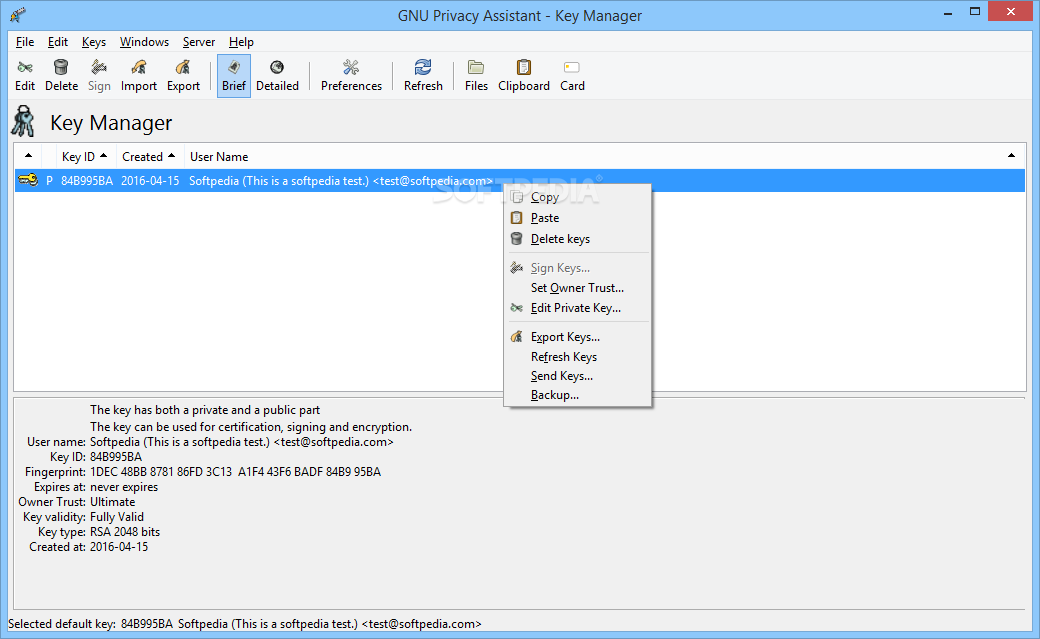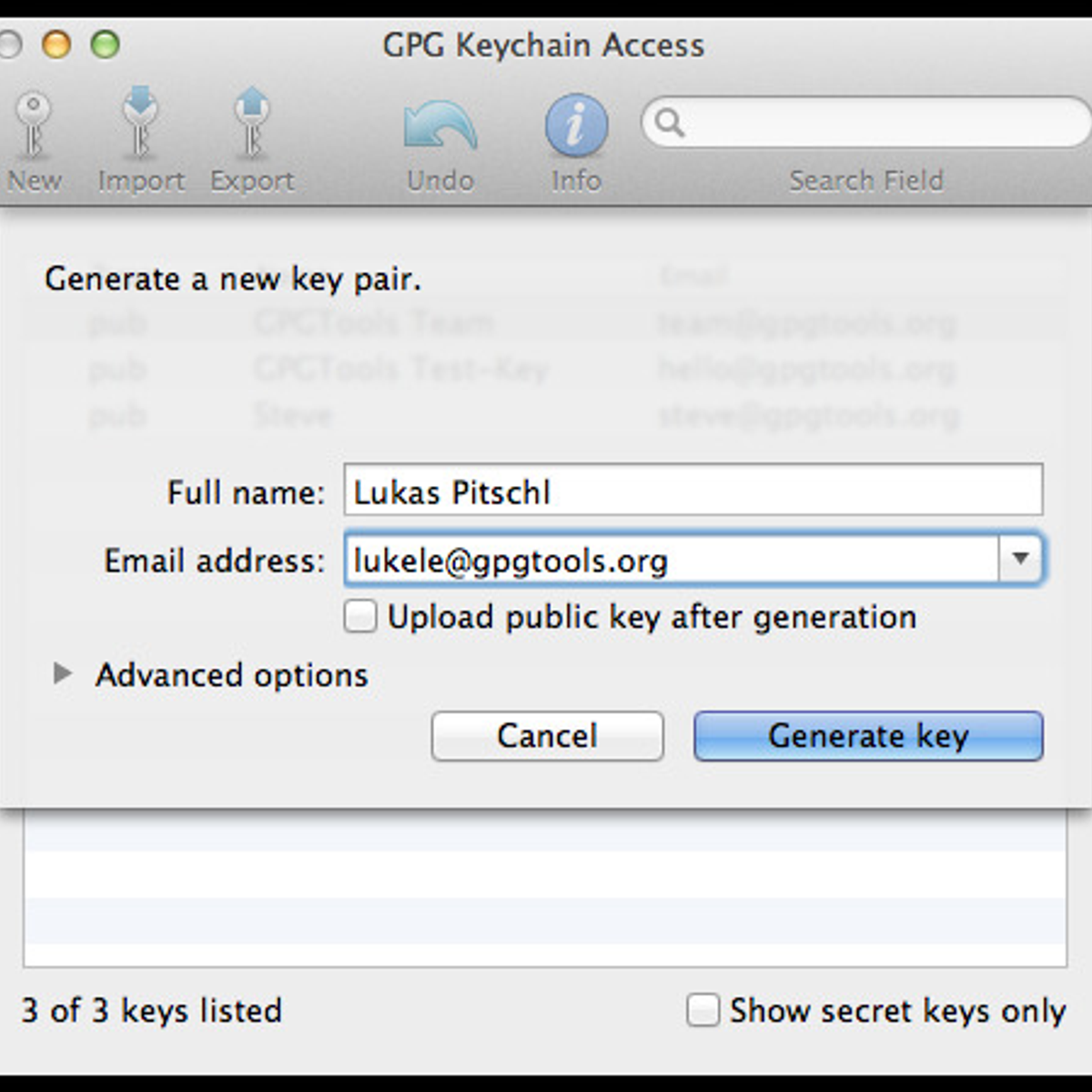
Gpg4win Alternatives For Mac
PGP does have a number of issues (discussed below), but it is still the most widely used email encryption system, and therefore the most interoperable with others no matter which platform or email service they use.It can also be used for signing and encrypting all sorts of other stuff but is mainly used to secure emails. How does PGP work?The details of how PGP works are, to be honest, rather complicated.
Find the best GPG4Win alternatives based on our research GnuPG, AES. Free download software reset printer epson t13. FileVault is a method of using encryption with volumes on Mac.
The important thing to remember, however, is that PGP uses public-key cryptography.Each user has a private key which they keep secret and use to decrypt emails sent to them using their public key. They also have a public key, which they freely so that other people can use it to send them encrypted emails. Private key – kept secret and used to decrypt own mail. Public key – distributed so that others can use it to encrypt mail for sending to youFor this tutorial, we’ll stick to how to use PGP for encrypting emails, but PGP keypairs are also very useful for signing and verifying. PGP vs OpenPGPWhen discussing PGP these days we almost always mean OpenPGP.
This is an open-source 100% compatible clone of the original PGP, which is now closed-source software owned by Symantec. Issues with PGPWhen PGP is used to secure emails, the metadata - such as email addresses of both the sender and recipient, date and time of sending, and e-mail’s subject line - is not encrypted. Just the body text and any attachments.Another problem with PGP is that it does not use (PFS). So once keys for one encrypted email are broken, all other emails encrypted using the same keys will also be compromised.Arguably the biggest problem with PGP, though, is that it's just not very easy to use, with the result being that most people simply don’t. To combat this, we will show you the two easiest ways to use PGP on your Mac: Method 1: MalivelopeMailvelope is a free and open-source browser extension for Chrome and Firefox that makes using PGP on your Mac about as easy as PGP is ever likely to get. Please check out our full guide for a detailed look at how it works.Method 2: GPGTools with GPG MailThe most common implementation of OpenPGP is Privacy Guard (also known as GnuPG or just GPG). GPG on its own is a basic command-line tool, but GPGTools for macOS provides a GUI interface and advanced features.It is worth noting that in 2018 GPGTools make headlines due its vulnerability to the attack which affected all versions of PGP at the time.
Since GPGTools 2018.2, however, this vulnerability has been patched.GPGTools is free, but the GPG Mail plugin for Apple Mail is designed to help fund the open-source project and costs $22. This is a one-off fee, but you do need to pay again for new versions as they are released.
Download and install the.Do please make sure to the download before installing it. During installation, stick with all the default settings.

Create a new keypair.Open the GPG Keychain app, select New (the + sign) and fill in the relevant details. You can leave the Advanced options alone or play with them as you please. Upload your public key to a keyserver.This will allow others to find it using your email address so that they can send you secure PGP-encrypted emails.Do please be aware, though, that once a public key is uploaded to a keyserver it cannot be deleted. The keyserver will send you an email asking you to confirm the upload.You will see your newly created key in the GPG Keychain.If you already have a keypair then you can import it by clicking the Import button.
You can then right-click on it - Send Public Key to Keyserver. Send an encrypted email.In order to send a PGP-encrypted email, you will need the recipient's public key. If they have already sent it to you (as an email attachment, for example) then you can import it using GPG Keychain.If you already have it, then you can search by email address for public keys that have been uploaded to a key server. Once you have found the key you want, simply import it into your GPG Keychain.Open the Apple Mail app. If you're using an up-to-date version of macOS (10.14 Mojave+), you will need to enable GPG in Mail. To do this, Go to Preferences - General - Manage Plug-ins and enable the GPGMailLoader.mailbundle plug-in.Then simply compose an email as normal, ensuring that OpenPGP is selected in the new green drop-down button to the top right of the compose screen.When you have finished writing your message you can sign and/or encrypt it using the two buttons to the right of the Subject line:A) Sign - this verifies that the email was sent by yourself. When GPG Mail is installed, all messages are signed by default (button is blue).
Click on the button to turn signing off.B) Encrypt - encrypts the content of the message plus any attachments. It does not encrypt the subject line or hide any other metadata. Click the lock icon (turning it blue) to encrypt your email.Hit Send, and you will be asked for the password to your PGP key. If you are worried that an adversary may gain physical access to your Mac, then you should untick “Save in Keychain.”. Receive encrypted messagesWhen you receive PGP email that has been encrypted and/or signed with your public key, GPG Mail will automatically decrypt it and/or verify the signature using your private key. Verify and sign keysFor maximum security, you should verify and sign keys. Sony dcr trv530 drivers for mac. You verify a key by comparing the fingerprint you have of the key with the fingerprint owned by the sender to ensure they are identical.
Ideally, this is done face-to-face, but a secure communication channel such as will suffice.Each imported key’s fingerprint is prominently displayed in GPG Keychain.Once you are satisfied with the authenticity of a key, you can sign-it to confirm that you consider it valid. PGP works on a chain of trust, so you can opt to publish your signature in order to help others decide if the key is authentic.And that’s the basic outline of how to use GPGTools to send and receive PGP emails in macOS. GPGTools has more tricks up its sleeve, however, which we may explore in future articles.
What is PGP/GPG?PGP is cryptographic software that helps people ensure the confidentiality, integrity and assurance of their data, originally provided by the Symantec Corporation. GnuPG is the free,open-source port that is largely compatible. What Operating System can I use?Too many to list! It’s known to run on Microsoft Windows, Mac OS X, the various free Unixes, AIX, Solaris, HPUX, OpenVMS, Android, and more.
For use in conjunction with reddit, the most convenient option will be a browser plugin,. Where can I download it?🗔📱㍶🍏▖Debian / Ubuntu sudo apt-get install gnupg2▖OpenSUSE sudo zypper install gnupg2▖Fedora, CentOS, or RHEL sudo dnf install gnupg2▖Gentoo emerge gnupg▖FreeBSD sudo pkgadd -r gnupg▖. I think it mainly depends on your use cases.If you are encrypting texts/files manually, the only alternative I can think of is GPA which is unfortunately part of the gpg4win suite. But IMHO it is easier to use than Kleopatra.If your main purpose is to send/receive encrypted or signed mails, the alternatives depend on the mail agent you are using.If you are using Thunderbird is the one-and-only add-on.If you are an Outlook user, I can highly recommend.If you are using any webmail client, you might consider.If you have another use case, please let us know. Perhaps we have other ideas.